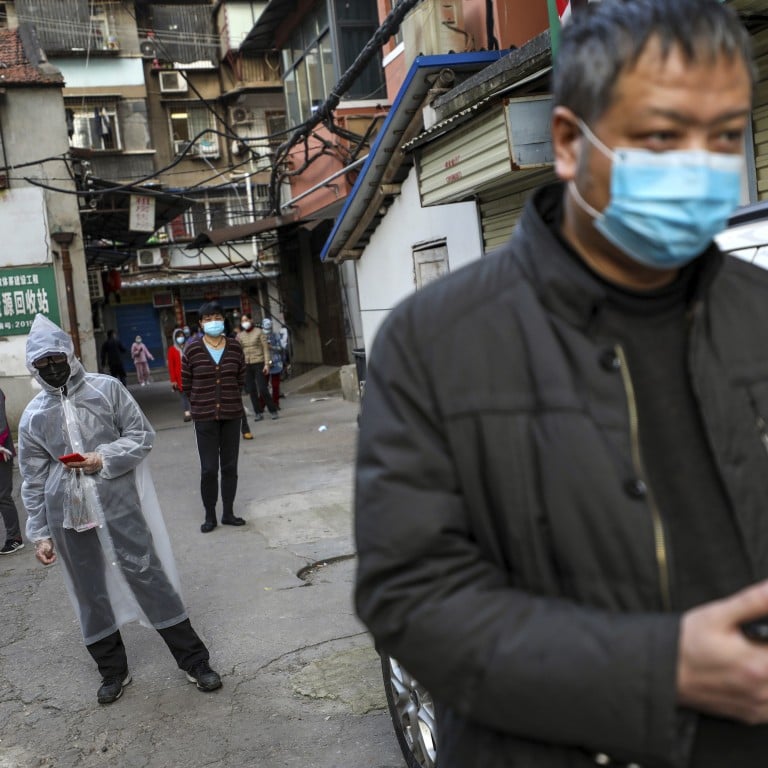
Thousands of covert coronavirus cases go under the radar in Wuhan, Chinese-led researchers say
- Study suggests that 59 per cent of infections were asymptomatic or mild enough not to attract medical attention
- More investigation needed to determine scale and transmission of these cases, scientists say
The estimate was based on about 26,000 laboratory-confirmed cases recorded in the city, the first epicentre of the coronavirus, between December and February, and was published on the medRxiv preprint platform early this month.
The paper has not been peer reviewed.
The researchers used lab tests as the basis of their assessment rather than Chinese government data on confirmed cases because the authorities used symptomatic manifestations and abnormal lung scans to classify patients.
The lab test data allowed the doctors from Tongji Medical College in Wuhan, Fudan University and Harvard University, to create models regardless of whether the patients had symptoms.
Should China count recovered coronavirus patients who test positive again?
The study called the asymptomatic and very mild cases “unascertained cases” and called for attention to gauge their size and transmission.
“Here, unascertained cases included asymptomatic cases and those with mild symptoms who could recover without seeking medical care and thus were not reported to authorities,” the researchers said.
“We found that at least 59 per cent of infected cases were unascertained in Wuhan, potentially including asymptomatic and mild-symptomatic cases.”
They estimated that there were 26,252 unascertained cases in Wuhan by February 18, about the same number of laboratory-confirmed cases at the time.
The paper did not reveal how many of the laboratory-confirmed cases that were used for the modelling were asymptomatic.
China’s public data of confirmed cases does not reflect asymptomatic cases. These cases were tracked but kept under a separate category, according to state guidelines on control and surveillance published on March 7.
The study said that based on their models, the total number of infections citywide on February 18 could have exceeded 125,000.
“We predicted the cumulative number of ascertained cases to be 26,252 by February 18, close to the actual reported number of 25,961, while the estimated cumulative number of total cases was 125,959.”
Wuhan reported 38,020 confirmed cases on February 18.
The study also estimated that 36,798 people had beeninfected overall as of January 25.
“Estimation of unascertained cases has important implications on continuing surveillance and interventions,” it said.
According to a report in the scientific journal Nature, Gerardo Chowell, a mathematical epidemiologist at Georgia State University in Atlanta, said the result was in the “right ballpark”.
But Chowell said the model might have overestimated the transmission and number of infections with mild or no symptoms because the model assumed that everyone in the community had the same opportunity to be in contact with anyone else, though in reality they might only have been in contact with a small number of families and friends.
Wu Zunyou, an epidemiologist at the Chinese Centre for Disease Control and Prevention, said on Tuesday that asymptomatic cases were identified by testing close contacts of confirmed cases. These people were quarantined in China and would not pose a threat to society, he said.
Asymptomatic cases would be reclassified as confirmed cases if they later developed symptoms.
State news agency Xinhua reported on Sunday that there was a new positive case in Wuhan, but the patient was not counted as a confirmed case because he was asymptomatic and his lung scan was normal.
However, there was another new positive case in the city that had been classified as a confirmed case because the patient, although not showing symptoms, had an abnormal lung scan.
The article called for closer surveillance on these cases.
Purchase the China AI Report 2020 brought to you by SCMP Research and enjoy a 20% discount (original price US$400). This 60-page all new intelligence report gives you first-hand insights and analysis into the latest industry developments and intelligence about China AI. Get exclusive access to our webinars for continuous learning, and interact with China AI executives in live Q&A. Offer valid until 31 March 2020.

